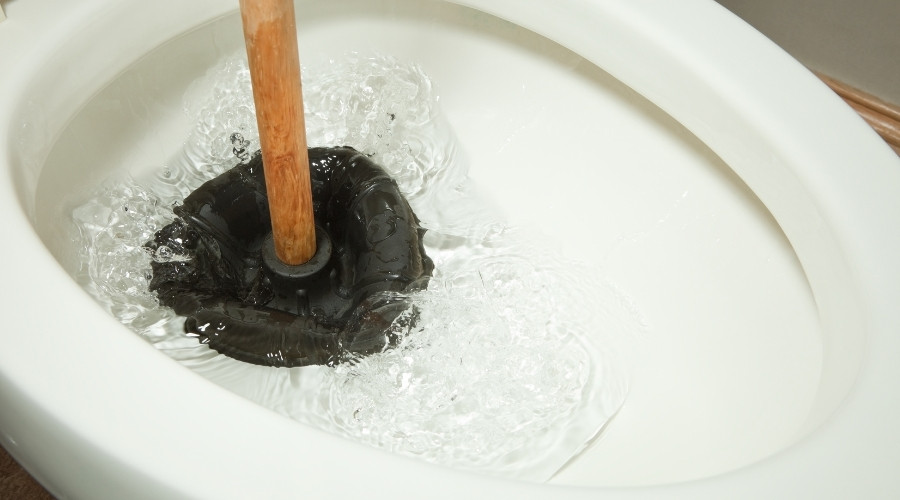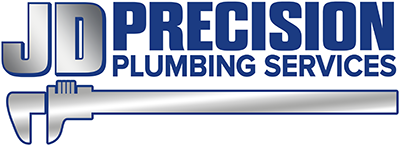Ways to Help Prevent the Toilet From Clogging
Few household issues are more disruptive than a clogged toilet. That anxious moment as the water rises can lead to messy cleanup and avoidable expense. The good news is that a handful of simple habits can dramatically reduce the chance of a toilet clog, protect sewer pipes from a clogged sewer line, and limit the need for emergency drain cleaning. The guidance below explains what should and should not be flushed, how to manage toilet paper use, and how to prevent main sewer line problems before they cause repeated backups.
Be Careful About What Gets Flushed
 A toilet is not a trash can. The rule that prevents most plumbing trouble is straightforward: only human waste and toilet paper belong in the bowl. Anything else increases the risk of a blockage in fixture traps, branch lines, or the main sewer line.
A toilet is not a trash can. The rule that prevents most plumbing trouble is straightforward: only human waste and toilet paper belong in the bowl. Anything else increases the risk of a blockage in fixture traps, branch lines, or the main sewer line.
Common offenders behind a clogged toilet include:
- Paper towels and facial tissues are engineered to stay intact when wet and do not break down like toilet paper.
- Baby wipes, cleaning wipes, makeup wipes, and similar products—“flushable” labels notwithstanding—often persist long enough to accumulate in sewer pipes and contribute to a sewer line clog.
- Feminine hygiene products and diapers; absorbent materials swell and can create an immediate obstruction.
- Cotton swabs, dental floss, and hair, which tangle and net other debris, gradually form a plug that may travel to the main sewer line.
A small lidded trash bin beside the fixture helps keep non-flushable items out of the system. Consistent disposal habits protect the sewer line, reduce the likelihood of clogs, and minimize future drain cleaning calls.
Use Less Toilet Paper
 Excessive toilet paper is one of the most frequent causes of a toilet clog. Large wads expand in water and can wedge tightly in the trapway or early sections of sewer pipes. Smarter use keeps plumbing clear while maintaining hygiene.
Excessive toilet paper is one of the most frequent causes of a toilet clog. Large wads expand in water and can wedge tightly in the trapway or early sections of sewer pipes. Smarter use keeps plumbing clear while maintaining hygiene.
Practical habits include:
- Fold, don’t wad. Folding uses fewer sheets and creates a flatter profile that moves more easily through bends.
- Break up disposal. If additional paper is needed, a mid-flush clears the first portion so the second isn’t competing for the limited trap and line capacity.
- Choose readily dissolving options. Lightweight single- or double-ply toilet paper generally breaks down faster than ultra-thick varieties that linger longer in pipes.
If modest amounts of paper still coincide with frequent slowdowns, a deeper restriction may already be present downstream. In such cases, professional drain cleaning can remove buildup and restore full flow so that normal, sensible use of toilet paper does not result in recurrent clogs.
Prevent Sewer Line Clogs
Recurrent toilet clogs often indicate a problem in the main sewer line rather than the fixture itself. When a sewer line clog forms, wastewater cannot exit properly and will reverse into the lowest drains—frequently a toilet or floor drain. Addressing the underlying issue is the only reliable way to stop the cycle.
Common contributors to a clogged sewer line include:
- Tree roots infiltrating joints or cracks in older sewer pipes gradually constrict flow.
- Grease and fats that cool and solidify in lines, coating the interior and trapping solids that follow.
- Aging materials, corrosion, or settled soil create sags (bellies) and offsets that collect debris over time.
Warning signs may include multiple fixtures backing up at once, gurgling in a toilet when another fixture runs, sewage odors along the property, or unusually lush grass above the path of the sewer line. Preventive steps—keeping grease out of sinks, disposing of wipes and other non-dissolving items in the trash, and scheduling periodic camera inspections, especially on treed lots—can help avoid a sewer line clog before it escalates into a severe backup.
When signs point to a main-line obstruction, licensed technicians can inspect the sewer line with a video camera and select the appropriate remedy. A motorized auger (drain snake) can break through compacted debris or limited root growth; hydro jetting scours interior pipe walls to remove grease, scale, and residue and restore internal diameter. If inspection reveals structural defects, targeted repairs can prevent repeat blockages and protect the property from a more serious failure.
With consistent flushing habits, mindful toilet paper use, and prompt attention to main-line warnings, a clogged toilet becomes the rare exception rather than a regular headache. When needed, timely drain cleaning and professional evaluation of the sewer line ensure the entire drainage system continues to operate as intended.
About JD Precision Plumbing Services
JD Precision Plumbing Services is a family-owned and operated plumbing company proudly serving the communities of The Woodlands and the surrounding areas with upfront and dependable service. Call them today for upfront pricing on clogged toilet repair in The Woodlands, TX.




